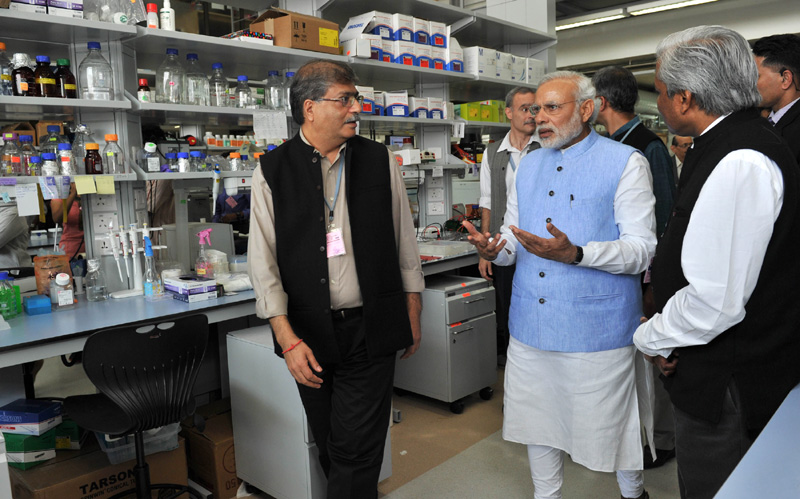
NEW DELHI: Prime Minister Narendra Modi and President Pranab Mukherjee will next month launch a single window funding clearance mechanism backed with a Rs 1,000-crore kitty to get Indian technical institutions to conduct original research in areas where the country is heavily dependent on foreign technology.
An Inter Ministerial Group (IMG) is being set up as the single window mechanism that will screen research projects and proposals by India’s leading research and technology institutes and then approve them and earmark funds for the same. The IMG will have on board the Ministry of Human Resource Development (HRD), Ministry of Defence, Department of Science & Technology, Department of Biotechnology, and Ministry of Rural Development, among others. Named ‘IMPRINT’ — the one stop research funding mechanism to boost indigenous technology and research will be launched by the PM and President on November 5 at the Visitor’s Conference.
The move to set up a one stop funding system has been made after a number of scientists and researchers conveyed how the current bureaucratic systems were coming in the way and delaying projects as well as discouraging institutes from taking them up. The drill of getting clearances and approvals through various ministries was another dampener. The Indian Institutes of Technology (IITs) and National Institutes of Technology (NITs) are already on board with the plan that is being piloted by the Smriti Irani-led HRD ministry. The issue was also taken up with the institutes at the recent meeting of the IIT Council and the NIT Council.
Ten areas have been identified where India is heavily dependent on foreign technology and where little or no research and manufacturing has been initiated in India. These include healthcare, computers & information technology, energy, sustainable habitat, nano technology hardware, water resources and river systems, advanced materials, manufacturing, defence, environment & climate change.
The IITs and the Indian Institutes of Science have helped identify these areas and detailed the specifics of India’s technology requirements now and in the next few years. For instance, in areas like nano technology hardware, almost everything is being imported currently as is the case with diagnostic imaging in healthcare. The research areas will also dovetail with the ‘Make in India’ campaign to boost indigenous manufacture.
“The idea is to encourage a research environment and also drive institutes to take up research that is socially and technically relevant to India’s needs across sectors. For instance, in Healthcare, India practically imports every single diagnostic machinery simply because it is not manufactured here and there is new research in India which can be scaled up. Through IMPRINT, we hope to change that.
That apart, a streamlined, well-coordinated funding process is key to building a robust research eco system and this forum should help bring in that”, an official associated with IMPRINT told ET on condition of anonymity.
With the Inter Ministerial Group set to take shape — the last meeting on the same took place on October 16, it is expected that institutes will submit specific project proposals or annual research plans to the group and the go ahead for the same will be given by February every year so that research can effectively begin from April 1 with the new financial year. To start with, the Inter Ministerial Group will hold a funding corpus of Rs 1,000 crore, which will be disbursed to institutes concerned. Once the group approves a project, the ministry concerned and the institutes will coordinate for the rest of the paperwork.
ET View: Cheer for research to yield results
One can hardly argue against more funding for research. But much more needs to be done, including ensuring that research mechanisms and institutions, such as the CSIR labs, yield results. It should encourage and facilitate partnerships between public and private sectors, education and research institutes and companies. Not only would such efforts ensure an exponential rise in research funding, but it would also improve the chances of research finding practical implementation on a scale that will create employment and value, and spur innovation.